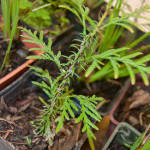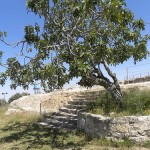Browsing Articles

Creation Care Curriculum: Every Creature Singing
This spring while scheduling your Earth Day observance, plan to educate your church on how our decisions impact the one and only planet that God gave us to live on — and how we can care for creation! “Every Creature Singing” gives you a detailed 13-session lesson plan, as well as a teacher’s guide. Each lesson has Scripture, readings, discussion questions that focus on your neighborhood, and other resources. (Photo: George Fox Evangelical Seminary, Creative Commons)

Where are the Figs?
Third Sunday in Lent, Year C, February 28, 2016
Someday, like it was for that barren fig tree, there will be an accounting. For the barren church that means doors closed, windows shuttered, and opportunity lost. No one wants to see that happen to their congregation, right? Or do they? (Photo: Ian Scott, Creative Commons)

51 Ideas for a Year-Round Stewardship Program
This is the kind of resource you need to keep handy for every brainstorming session of your stewardship or finance committee — a wide assortment of ideas that can keep your congregation on top of things 365 days a year. Some of them will be simple reminders of things you probably are already doing, but others will stretch your ideas and imaginations. Compact. Simple. Accessible. (Photo © TRITOOTH – Fotolia.com)

Waiting Game?
Lectionary Reflection for the Second Sunday in Lent, Year C, February 21, 2016
This week’s lectionary lessons have a common thread of waiting that weaves them together. And we Americans do a LOT of waiting (some 37 billion hours per year), yet we find it difficult to wait for God. (Photo: Andy Wright, Creative Commons)

A Fast of First Fruits
Lectionary Reflection for the First Sunday in Lent, Year C, February 14, 2016
Are you “giving up” something for Lent? Forget the nominal “sacrifices†this year. Ask instead, “What fast of ‘first fruits’ do I need to offer to God? What really matters? (Photo: Faith Goble, Creative Commons)

Treasure Hunt
Ash Wednesday Lectionary Nuggets, Year C, February 10, 2016
Here we go again! The 40 days of Lent are upon us and so, too, will be the ashen crosses on our forehead that mark this beginning. The lessons offer rich possibility for proclamation–everything from piety and spiritual practices to returning to God with broken and contrite hearts, to the cost of discipleship, and (of course) stewardship. (Photo: dimdimich-fotolia.com)

With Great Boldness
Transfiguration of our Lord, Year C, February 8, 2016
Here’s the good news we have to share with folks who are timid, downtrodden, terrified, or even just plain old bored: We are no longer separated from seeing and experiencing God’s glory thanks to Jesus. We do, however, need to listen to him. And then, having heard, we are called to act in the power of the Spirit of God. (Photo: Julie Jordan Scott, Creative Commons)

First Things First
Money plays a significant role in North American culture and in our personal lives. We are surrounded by influences that tell us that life goes better with money – preferably with more money. But then Scripture reminds us that life is more than money, and Jesus calls us to live counter to our culture’s values. What’s a Christian to do? This free 90-page book helps you learn to recognize your financial habits and how your faith informs your giving and stewardship. (Photo: Jon Jordan, Creative Commons)

Make Stewardship your Lenten Discipline
This year commit to making Lent a time of personal devotion and renewal. Stretch yourself and find a stewardship connection in every meditation, devotion or activity. Because when it comes to it, everything really is a stewardship issue. Here are some free daily devotionals that can keep you thinking. (Photo © robhainer – Fotolia.com)

For the Love of Stewardship
Fourth Sunday after the Epiphany, Year C
January 31, 2016
What if our congregations really took to heart 1 Corinthians 13:4-7 as “the more excellent way†of being the Body of Christ? Imagine the differences we might see and experience! All we need is love–just not the commercialized kind. (Photo: Bryan Brenneman, Creative Commons)


